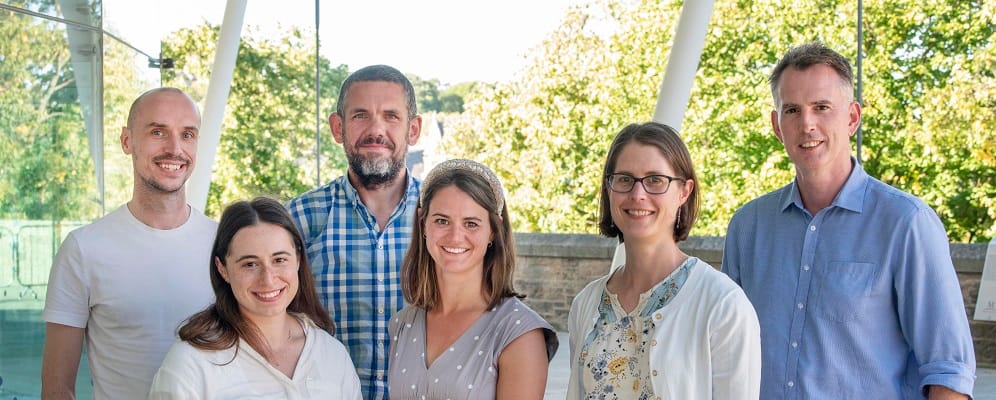Patrick Wild Centre and SIDB researchers have found that those with SYNGAP1-ID generally had differing eye movement patterns compared with a group of typically developing controls on a number of social attention tasks.

This research found that participants with SYNGAP1-ID looked at faces less than the controls, and when they did look at faces, they had less time looking at and fewer fixations to the eyes.
Additionally, when social and non-social objects or ‘stimuli’ (phone, car, face, bird, and ‘face-noise’ (a scramble of the pixels of the face)) were presented in an array, those with SYNGAP1-ID spent significantly less time looking at the phone stimulus as well as fewer fixations to the face compared with the typically developing controls.

However, when looking at two naturalistic scenes side by side, one social in nature (e.g., with children present) and the other not, there were no differences between the SYNGAP1-ID group and typically developing controls on any of the examined eye tracking measures.
Eye movements were recorded across three passive viewing tasks (face scanning, pop-out, and social preference) of differing social complexity in 24 individuals with SYNGAP1-ID and 12 typically developing controls.
This study is important as it provides novel findings on the social attention of those with SYNGAP1-ID. Additionally, it helps to provide further evidence for using eye tracking as an objective measure of the social phenotype in this population in future clinical trials.
This work was carried out by Damien Wright, Aisling Kenny, Sarah Eley, Andrew McKechanie, and Andrew Stanfield. This data is from the NeuroGD project and they hope to publish more of their findings soon.
This project was funded by the University of Edinburgh’s Patrick Wild Centre and Simons Initiative for the Developing Brain (SIDB) grant awarded to Andrew Stanfield. Funding was also received from the Wellcome Trust (Institutional Strategic Support Fund).
Source:
Read the full paper in Autism Research:
Damien Wright, Aisling Kenny, Sarah Eley, Andrew G. McKechanie, Andrew C. Stanfield
DOI: 10.1002/aur.3148
